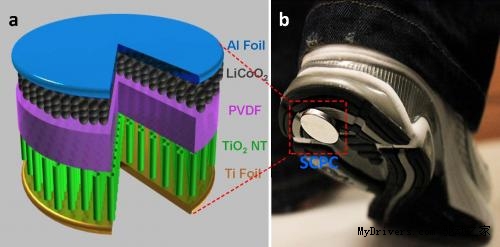No matter how much your tablet or mobile phone is, you can't escape the deadly Achilles heel: battery. Over the years, there have been no significant advances in rechargeable batteries, which has greatly limited the progress of mobile devices, especially for large-screen devices, and battery life is truly unsustainable.
Nokia once applied for a patented technology for self-charging batteries, but there has been no real movement (do not know if it has been cut off). Researchers from Georgia Institute of Technology have already started to try to convert theory into reality.
They started with a common lithium-ion battery and replaced the split electrode material with a polyvinylidene difluoride film that requires only a little pressure to be charged internally using its piezoelectric properties. No external voltage is needed. Intervention.
The researchers also put a coin-sized prototype battery on the sole of the shoe and tested it with foot pressure. The results fully achieved the desired results. The voltage at 2.3 GHz was able to raise the voltage from 327 millivolts to 395 millimeters in four minutes. The increase in volt, 65 millivolts, also greatly exceeds the 25 millivolts previously achieved.
They also found that although the current voltage and current are very low, self-charging can still be performed at a high voltage of about 1.5 volts.
The biggest challenge now is how to achieve higher efficiency, including finding new materials. As for when it can be put into practical use, just like every cutting-edge technology, wait for it.
Finally, the main team involved in the research is Chinese or ethnic Chinese. The names are Xinyu Xue, Sihong Wang, Wenxi Guo, Yan Zhang, and Zhong Lin Wang.


Flat Conbeyor Belt,White Food Grade Rubber Conveyor Belt,Professional Conventional Flat Conveyor Belting
Steel Cord Conveyor Belt Co., Ltd. , http://www.nsconveyorbelt.com